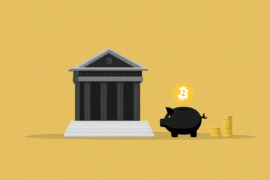This article may contain references to products or services from one or more of our advertisers or partners. We may receive compensation when you click on links to those products or services. Nonetheless, our opinions are our own.
The information presented in this article is accurate to the best of our knowledge at the time of publication. However, information is subject to change, and no guarantees are made about the continued accuracy or completeness of this content after its publication date.
Cryptocurrency has changed the way we handle money by giving us new ways to invest and pay for things. But it has also become a target for scammers. Scammers use the fact that digital currencies are decentralized and often anonymous to trick investors and steal their money. Banks and regulatory bodies can often step in to stop traditional financial fraud, but cryptocurrency transactions are usually irreversible, which makes scams even worse.
To protect your assets, you need to know how these scams work and how they work. We’ll list ten of the most common cryptocurrency scams, explain how they work, and give useful tips on how to avoid losing money.
- 1. Phishing Scams
- 2. Ponzi Schemes
- 3. Fake Exchanges
- 4. ICO Scams
- 5. Impersonation Scams
- 6. Fake Wallet Apps
- 7. Pump-and-Dump Schemes
- 8. Giveaway Scams
- 9. Social Media & Messaging App Scams
- 10. Ransomware Attacks
- Stay Vigilant and Protect Your Investments
- Frequently Asked Questions
- What are the most common cryptocurrency scams?
- Why are cryptocurrency scams so effective?
- How can I spot a phishing scam in crypto?
- What’s a Ponzi scheme in cryptocurrency?
- How can I tell if an exchange is fake?
- Are all ICOs risky?
- How do impersonation scams work?
- What’s the danger of fake wallet apps?
- How do pump-and-dump schemes operate?
- Are giveaway promotions in crypto real?
- How do scammers use social media and messaging apps?
- What is a ransomware attack in crypto?
- What are the best practices to avoid crypto scams?
- Recommended Reads
1. Phishing Scams
Phishing scams are one of the most common types of cybersecurity threats in cryptocurrency. Scammers pretend to be real crypto exchanges, wallets, or service providers to get people to give them private information.
These scams usually come in the form of emails, text messages, or pop-ups that say an account has been hacked or needs to be verified right away. The message has a fake link that takes you to a fake login page. If you enter your credentials there, the scammer will take over your account.
How to Avoid Phishing Scams
- Always type the URL of the official website directly into the browser instead of clicking on links in emails or messages.
- Enable two-factor authentication (2FA) on all crypto-related accounts.
- Even if someone says they work for customer support, don’t share your private keys or passwords.
- Verify official emails by checking the sender’s domain.
2. Ponzi Schemes
Ponzi schemes promise investors high returns with little risk to get them to invest. These schemes don’t make money by making real investments. Instead, they use money from new participants to pay off old investors, which makes it look like they are doing well. When hiring slows down, the plan falls apart, and most people end up with nothing.
These scams often look like investment funds, trading platforms, or staking programs. Scammers use fake testimonials, endorsements from influencers, and professional marketing to make themselves look trustworthy.
How to Identify a Ponzi Scheme
- Be careful of investment platforms that promise high, fixed returns with no risk.
- Look into the business model. If returns only come from new deposits, it’s a scam.
- To make the most money, stay away from platforms that need referrals or hiring.
3. Fake Exchanges
Fake exchanges are trading sites that trick people into giving them money. To get investors to sign up, they often promise unrealistic bonuses, no trading fees, or special deals. Users can’t take their money out once they deposit it, and eventually the platform goes away.
Some fake exchanges let you make small withdrawals at first to build trust, but then they put limits on withdrawals or charge extra fees to get your money.
How to Spot a Fake Exchange
- Only use exchanges that have been around for a while and have good reviews.
- Check to see if the exchange has the right licenses and is registered with the financial authorities.
- Be careful of platforms that make you put down a lot of money before you can trade.
4. ICO Scams
Initial Coin Offerings (ICOs) let crypto projects get money by selling new tokens before they are traded on the open market. Some ICOs have successfully launched real cryptocurrencies, but many have been scams.
Scam ICOs have whitepapers that are too hyped up and full of technical jargon, but they don’t have any real-world uses. The developers disappear after the money is raised, leaving investors with tokens that are worth nothing.
How to Identify a Fake ICO
- Look into the development team and make sure they have experience and a good track record with blockchain technology.
- Make sure the project has a clear and detailed whitepaper that lays out a real business model.
- Be careful of ICOs that promise too much or don’t have a working product.
5. Impersonation Scams
Scammers who pretend to be crypto influencers, project developers, or exchange representatives to get money or steal personal information are called “impersonation scams.”
Scammers make fake profiles on social media, fake websites, and even deepfake videos to trick people. They might promise “exclusive investment opportunities,” say they can double your money, or ask for personal information while pretending to help.
How to Avoid Impersonation Scams
- Always check identities on official websites and verified accounts.
- If you get a direct message from a “influencer” or “support agent” asking for money or login information, don’t believe it.
- Check social media accounts for official verification badges.
Voted "Best Overall Budgeting App" by Forbes and WSJ
Monarch Money helps you budget, track spending, set goals, and plan your financial future—all in one app.
Get 50% OFF your first year with code MONARCHVIP
6. Fake Wallet Apps
Fake wallet apps show up in app stores with names that look like real wallets but aren’t. Some work normally but send private key data to scammers without the user knowing.
Once people put money into these wallets, the scammers have full control over the money and the victims have no way to get it back.
How to Stay Safe from Fake Wallet Apps
- Only download wallets from official websites or app stores that have been checked.
- Before you install a wallet, read the developer’s information and user reviews.
- If you have a lot of cryptocurrency, keep it in a hardware wallet.
7. Pump-and-Dump Schemes
Pump-and-dump schemes use coordinated buying, social media hype, and false advertising to make the price of a cryptocurrency go up. When the price reaches its highest point, the people in charge sell their shares, which causes the market to crash and leaves late investors with big losses.
How to Recognize Pump-and-Dump Schemes
- Watch out for sudden price increases in low-market-cap cryptocurrencies that don’t have any real improvements.
- Stay away from investments that are heavily pushed by anonymous groups or social media stars.
- Instead of guessing about the project’s future, look into its long-term viability.
8. Giveaway Scams
Giveaway scams say that people can get free cryptocurrency if they send a small amount first. Scammers often pretend to be famous investors, celebrities, or crypto companies on social media and say they will “double” donations.
How to Avoid Giveaway Scams
- You don’t have to pay anything up front for real giveaways.
- Check official websites and sources to make sure promotions are real.
- If an offer sounds too good to be true, it probably is.
Scammers make fake Telegram, Discord, and WhatsApp groups and say they are giving out insider tips, exclusive investment opportunities, or fake airdrops.
Fake success stories and testimonials are used to trick victims into thinking the scam is real before they are asked to send money.
- You should only join official groups that are linked to from a project’s website.
- Don’t click on links you don’t know are safe or download files you don’t know are safe.
- Be careful of messages that you didn’t ask for that push high-return investments.
10. Ransomware Attacks
Hackers use ransomware to lock up a person’s files and then demand cryptocurrency payments to unlock them. Phishing emails and downloads of bad software are how these attacks spread.
How to Protect Against Ransomware
- Make sure your antivirus software and system updates are always up to date.
- Make sure your antivirus software and system updates are always up to date.
- Back up important files to offline storage on a regular basis.
Stay Vigilant and Protect Your Investments
Cryptocurrency scams keep changing, so it’s important to stay up-to-date and be careful. You can keep your assets safe from fraud by spotting red flags, doing thorough research, and putting in place strong security measures.
Takeaways
- Be careful of any investment that promises high returns with no risk.
- Before you use exchanges, wallets, or influencers, make sure they are real.
- For extra security, turn on two-factor authentication (2FA) and use hardware wallets.
The best way to protect yourself from crypto scams is to know what they are and be careful. You can safely and confidently navigate the digital asset space if you do your research and follow safe practices.
Frequently Asked Questions
What are the most common cryptocurrency scams?
Ten of the most common scams include:
Phishing scams
Ponzi schemes
Fake exchanges
ICO (Initial Coin Offering) scams
Impersonation scams
Fake wallet apps
Pump-and-dump schemes
Giveaway scams
Social media/messaging app scams
Ransomware attacks
Why are cryptocurrency scams so effective?
Scammers take advantage of the fact that crypto transactions are decentralized, anonymous, and can’t be undone. Once money is sent, it’s usually impossible to get it back, which makes crypto a good target for scams.
How can I spot a phishing scam in crypto?
Be on the lookout for emails or messages that say you need to verify your account right away or that there is suspicious activity.
Don’t click on links; instead, always type official URLs directly into your browser.
Turn on 2FA and never give out your passwords or private keys.
What’s a Ponzi scheme in cryptocurrency?
It’s a scam where new investors’ deposits are used to pay returns instead of real profits. The scheme falls apart when recruitment slows down, and most people lose their money.
How can I tell if an exchange is fake?
Check for licenses and regulatory registration.
Read independent user reviews.
Avoid platforms demanding large upfront deposits or promising unrealistic bonuses.
Are all ICOs risky?
A lot of them are, but not all of them. A scam ICO usually doesn’t have a real product, has whitepapers that are either vague or copied from other sources, and has a team that is either anonymous or not verified. Before you invest, always do a lot of research on the project.
How do impersonation scams work?
Scammers pretend to be crypto influencers, project founders, or customer support agents to get money or private information. They do this by making fake profiles or using deepfakes.
What’s the danger of fake wallet apps?
They look like real wallets to trick people into storing cryptocurrency. Scammers get private keys sent to them in secret, which gives them full control over the money.
How do pump-and-dump schemes operate?
Groups work together to artificially raise the price of a coin by spreading false information and hype. When the price reaches its highest point, the people in charge sell off their assets, which causes a crash.
Are giveaway promotions in crypto real?
You don’t have to send money first to get a real giveaway. Most “send one, get two back” deals on social media are fake.
They make fake groups on Telegram, Discord, and WhatsApp that promise insider tips, fake airdrops, or investment opportunities, often with fake testimonials to back them up.
What is a ransomware attack in crypto?
It’s when hackers lock your files and ask for cryptocurrency to unlock them. Phishing emails or bad downloads are two common ways that these attacks spread.
What are the best practices to avoid crypto scams?
Do thorough research on any platform, project, or person before sending funds.
Use hardware wallets for large amounts of cryptocurrency.
Enable 2FA on all accounts.
Keep software and antivirus programs updated.
Avoid clicking unknown links or downloading suspicious files.

Reviewed and edited by Albert Fang.
See a typo or want to suggest an edit/revision to the content? Use the contact us form to provide feedback.
At FangWallet, we value editorial integrity and open collaboration in curating quality content for readers to enjoy. Much appreciated for the assist.
Did you like our article and find it insightful? We encourage sharing the article link with family and friends to benefit as well - better yet, sharing on social media. Thank you for the support! 🍉
Article Title: 10 Common Cryptocurrency Scams and How to Avoid Them
https://fangwallet.com/2025/08/15/10-common-cryptocurrency-scams-and-how-to-avoid-them/The FangWallet Promise
FangWallet is an editorially independent resource - founded on breaking down challenging financial concepts for anyone to understand since 2014. While we adhere to editorial integrity, note that this post may contain references to products from our partners.
The FangWallet promise is always to have your best interest in mind and be transparent and honest about the financial picture.
Become an Insider

Subscribe to get a free daily budget planner printable to help get your money on track!
Make passive money the right way. No spam.
Editorial Disclaimer: The editorial content on this page is not provided by any of the companies mentioned. The opinions expressed here are the author's alone.
The content of this website is for informational purposes only and does not represent investment advice, or an offer or solicitation to buy or sell any security, investment, or product. Investors are encouraged to do their own due diligence, and, if necessary, consult professional advising before making any investment decisions. Investing involves a high degree of risk, and financial losses may occur including the potential loss of principal.
Source Citation References:
+ Inspo
There are no additional citations or references to note for this article at this time.












































